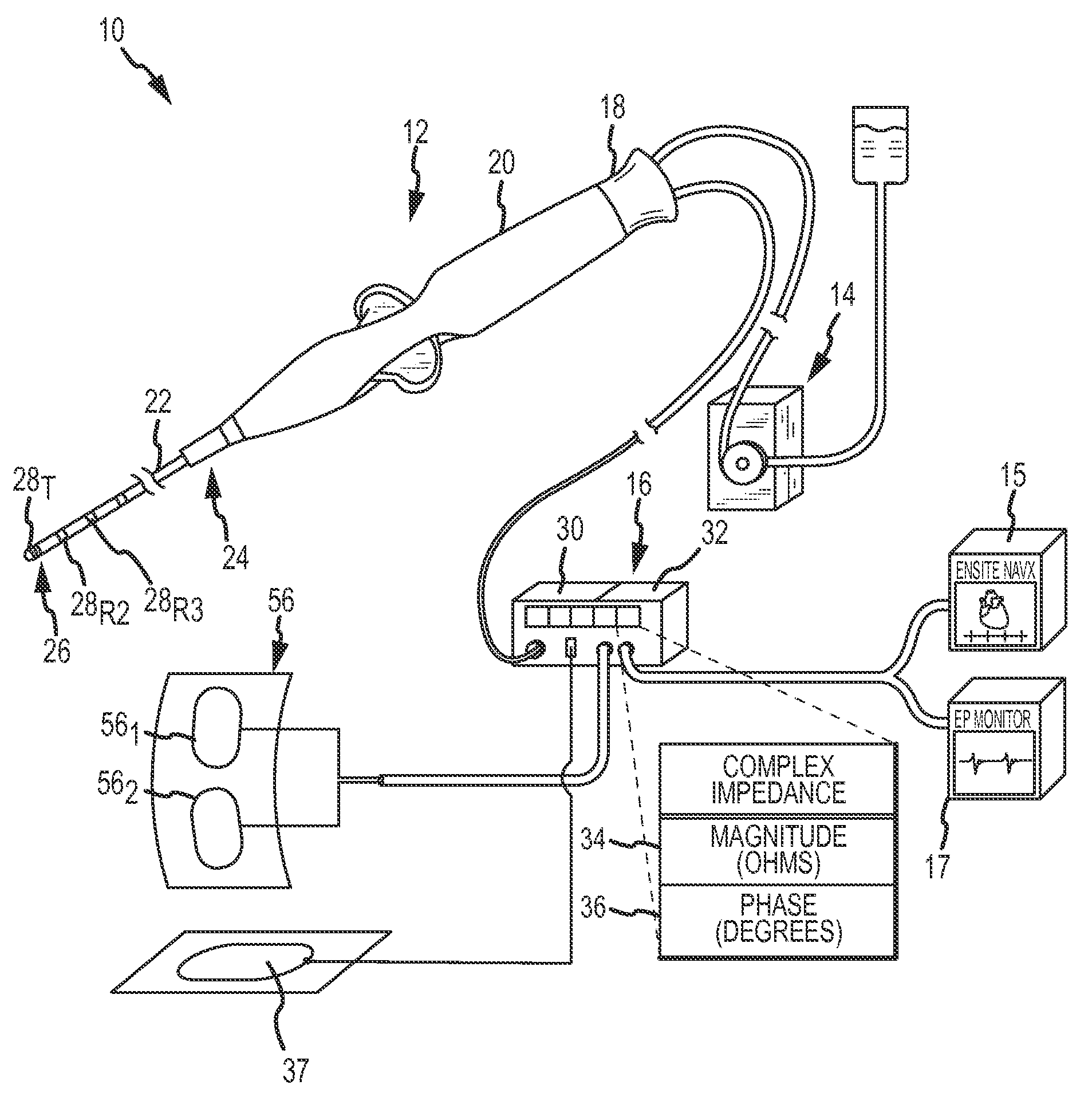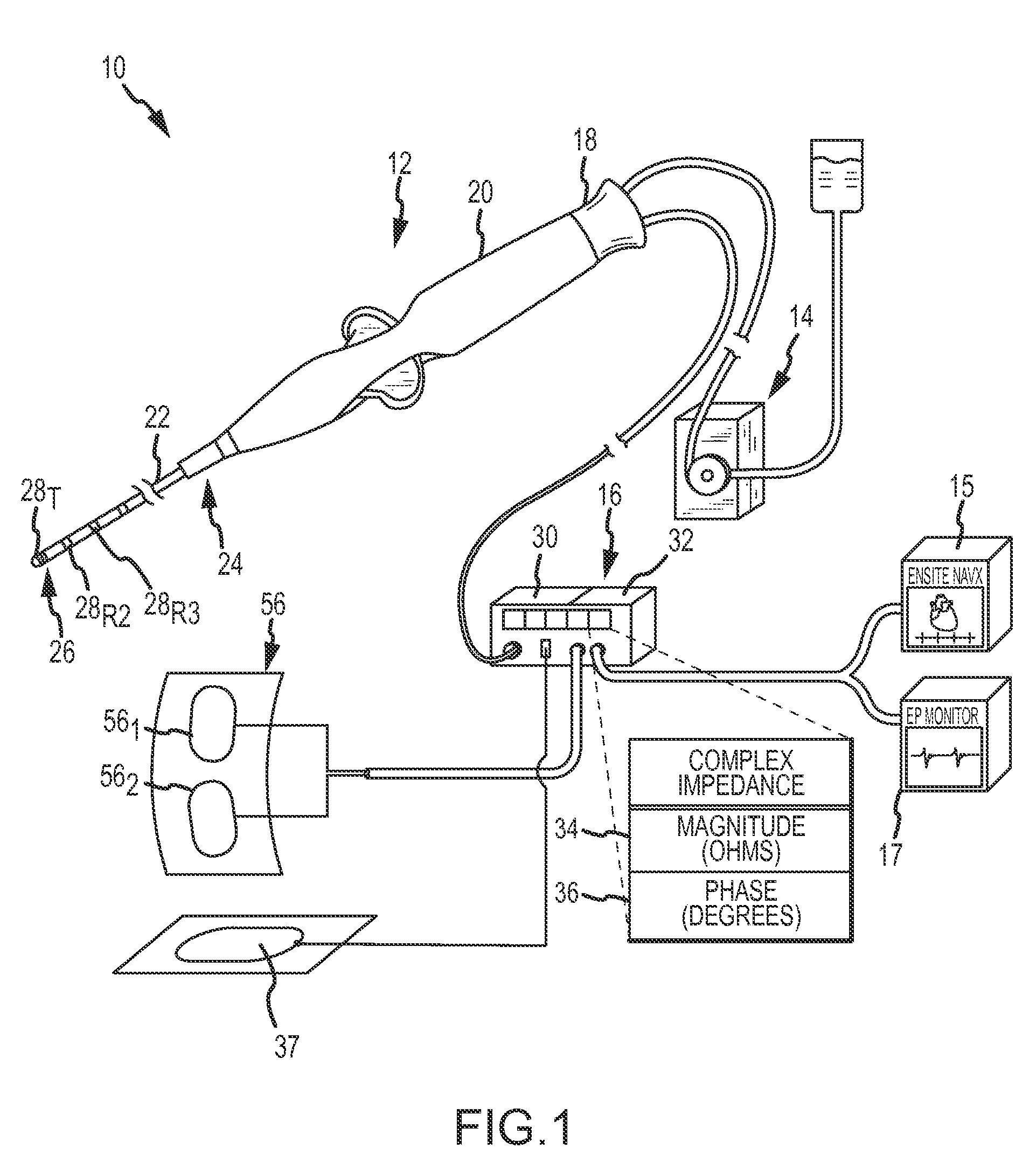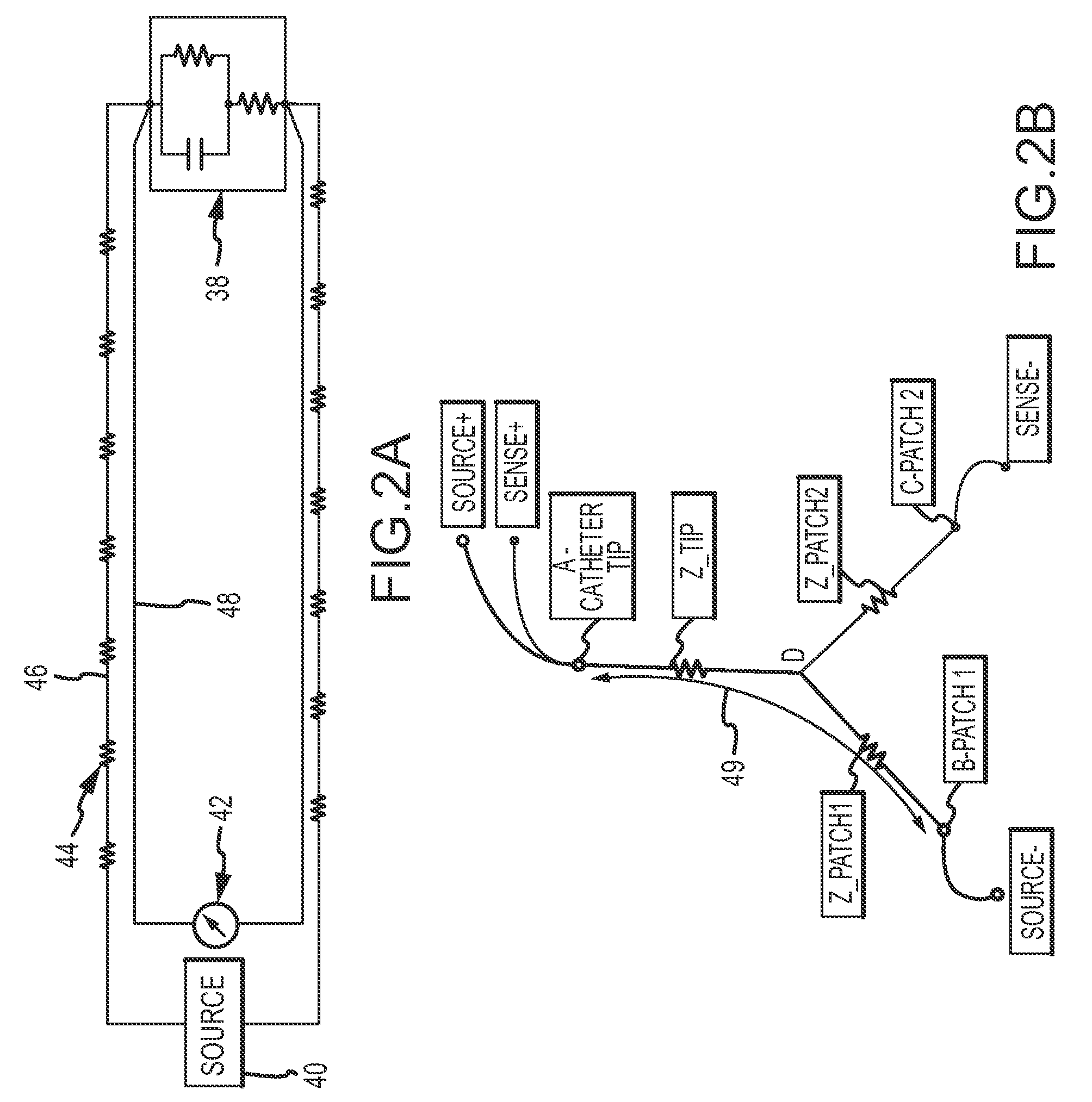System and method for measurement of an impedance using a catheter such as an ablation catheter
a technology of impedance measurement and ablation catheter, which is applied in the field of system and method of measuring an impedance using an ablation catheter, can solve the problems of inaccurate reading that is not completely indicative of the actual tissue condition, the measurement of two-terminal impedance is subject to variation, and the ablation may generate excessive heat, so as to achieve the effect of maximizing the predetermined distance and improving the accuracy of determining
- Summary
- Abstract
- Description
- Claims
- Application Information
AI Technical Summary
Benefits of technology
Problems solved by technology
Method used
Image
Examples
first embodiment
[0043]FIG. 3A is a diagrammatic view of a system according to the present invention. FIG. 3A shows the catheter 12 with the ablation (tip) electrode 28T at the distal end. The tip electrode 28T may comprise conventional configurations as to size, shape and materials. In one embodiment, the tip electrode 28T may be for example only a 2.5 mm, a 4 mm or an 8 mm length ablation electrode.
[0044]The catheter 12 include a source lead 46 (SOURCE (+)) electrically coupled to the tip electrode 28T and extending through the shaft 22 to the proximal end where it is terminated. The source lead 46 is configured in this embodiment to carry the RF ablation energy and in this regard may comprise conventional materials such as insulated copper wire or the like. In one embodiment, the source lead 46 may be 32 AWG or 34 AWG copper wire.
[0045]The catheter 12 also includes a sense lead 48 (SENSE (+)) electrically coupled to the tip electrode 28T and extending through the shaft 22 to the proximal end wher...
second embodiment
[0049]FIG. 3B is a diagrammatic view of the invention, which is the same as shown in FIG. 3A, except that is employs a different reference electrode wiring configuration, designated 54′. The wiring configuration 54′ deploys the source and sense returns as physically separate patches 56A and 56B so as to allow independent placement of each to achieve a predetermined distance 57 between them. In a preferred embodiment, the distance 57 should be a maximum obtainable, which is typically on opposite sides of a patient (e.g., Left-Right or Front-Back). The increase in the separation distance reduces the amount of overlap between the source and sense paths and accordingly focuses the impedance measurement to just that tissue volume closest to the tip electrode, which is generally what is desired.
third embodiment
[0050]FIG. 3C is a diagrammatic view of the present invention, which is the same as the embodiment of FIG. 3A, except for a variation in the connecting cable(s) and the catheter. Particularly, an alternate catheter embodiment, catheter 12′, uses a single lead, namely, a combined source / sense lead 46 / 48 rather than two separate leads. The combined lead is electrically connected to the tip electrode 28T and extends through the shaft 22 to the proximal end where it is terminated in the connector interface 18. The combined lead 46 / 48 may be of the same construction as the source lead 46 in FIG. 3A. Of the cables 50 and 52, it is contemplated that the one that is to connect to the catheter 12′ will be modified. Thus, if no extension cable is used, then the generator cable 52 will be modified. If the extension cable 50 is used, then it will be modified, and the generator cable will be unmodified. More specifically, the modification involves the end connecting to the catheter 12′, where th...
PUM
 Login to View More
Login to View More Abstract
Description
Claims
Application Information
 Login to View More
Login to View More - R&D
- Intellectual Property
- Life Sciences
- Materials
- Tech Scout
- Unparalleled Data Quality
- Higher Quality Content
- 60% Fewer Hallucinations
Browse by: Latest US Patents, China's latest patents, Technical Efficacy Thesaurus, Application Domain, Technology Topic, Popular Technical Reports.
© 2025 PatSnap. All rights reserved.Legal|Privacy policy|Modern Slavery Act Transparency Statement|Sitemap|About US| Contact US: help@patsnap.com



